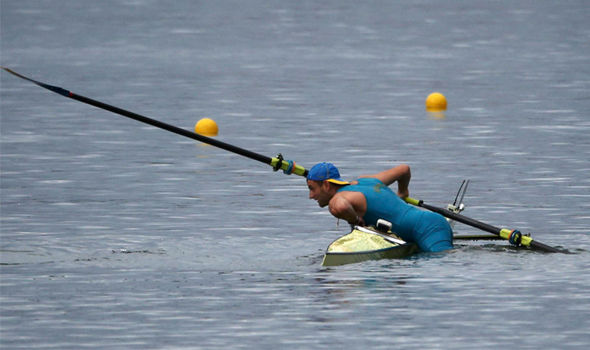In cold weather it is normal to feel cold; shivering is the body trying to create more heat. If you don’t do something about it (by putting on more clothes or by rowing harder) the shivering gets worse and can be an early symptom of hypothermia; you need to end your outing and get warm. The risk of hypothermia increases rapidly when it is windy or wet as well as being cold.
Those who fall in in the winter are, first, at risk of cold shock; falling in to cold (anything below about 15°) water can lead to incapacitation and drowning in the first 2-3 minutes. Those who survive this, and pull themselves up onto their boat, remain at high risk of hypothermia until they are dry and in a warm environment.
1. Wear the right clothes
In winter you must wear enough of the right clothes: several layers, but not heavy layers which can get wet and make matters worse (you must be able to swim in the clothes you are wearing). A warm hat and scarf are surprisingly effective at keeping you warm and do not interfere with your rowing. A “technical” base layer will keep you warm without overheating.
2. Warm up before an outing
Warm up before your outing (a jog or quick warm-up circuit) and then again once you are on the water. Gloves are not recommended: instead pump blood into your hands by standing like a penguin, with your arms straight and hands sticking out to the side, raising your shoulders and then pumping down. Or just a fast windmill with your arms until your hands are pink.
3. Keep warm when stopped
If you have to stop (and particularly when marshalling before a race) you may need to put on layers again. Keeping spare layers in a plastic bag in the boat can help to keep them warm and dry. Put your hands into your armpits to keep them warm.
In cold conditions, when a crew stops, it is good to turn round and check each others’ face and hands: a white nose or ears suggests frostnip (warm it up by covering it with your hands). Exchange a few words with your crewmates to check they are behaving normally. If you or a crewmate are seriously cold, tell your coach or the person running the outing so that they can do something about it.
4. If you fall in, stay with the boat
You should have practised a capsize drill and know not to panic; but sudden immersion in cold water can lead to the initial deep gasping, uncontrollable rapid breathing, with possible dizziness and pins and needles, and panic reaction which are the symptoms of cold shock. If you see any of these happening, the person needs immediate help. Talk to them and try to calm them down while getting them out of the water by the fastest possible means.
Victims should if possible get themselves on top of the boat, to reduce heat loss, and swim with the boat towards the bank while awaiting help.

He may not be a great sculler but this is an Olympic-standard capsize drill!
5. Re-warming
A hypothermia victim (whether from prolonged exposure or from falling in) needs to be moved to somewhere warm as soon as possible. Wrap him or her in dry clothes and a space blanket (there are space blankets in all the first aid kits and in the safety launch) until you are in a place where you can remove wet clothing and use a warm blanket (a warm cotton blanket is kept in the office but there is always some warm and dry clothing available). Getting into a shower (while still fully clothed) can also be a good way to warm up, while a hot drink helps to re-warm from inside.
If the victim is confused, has slow, shallow breathing or is unconscious, call 112 immediately.
